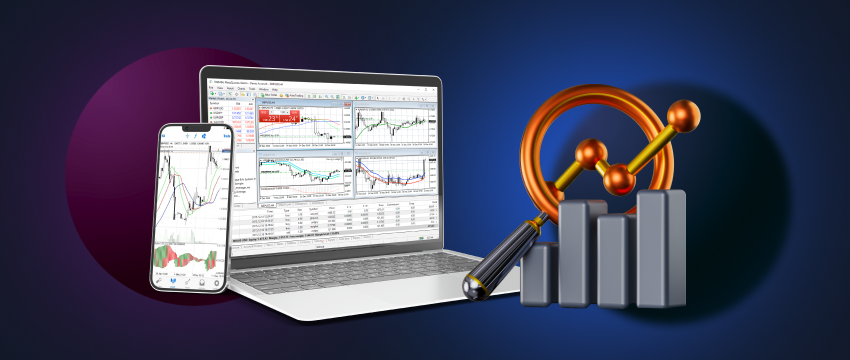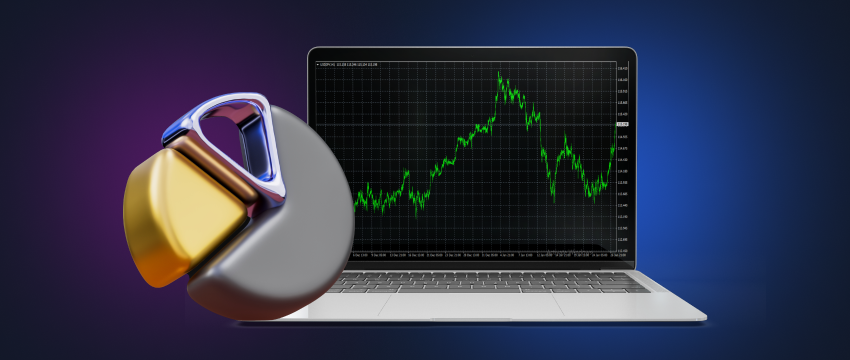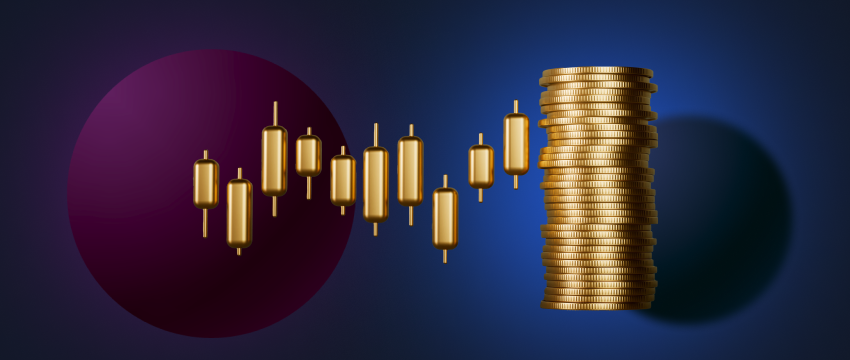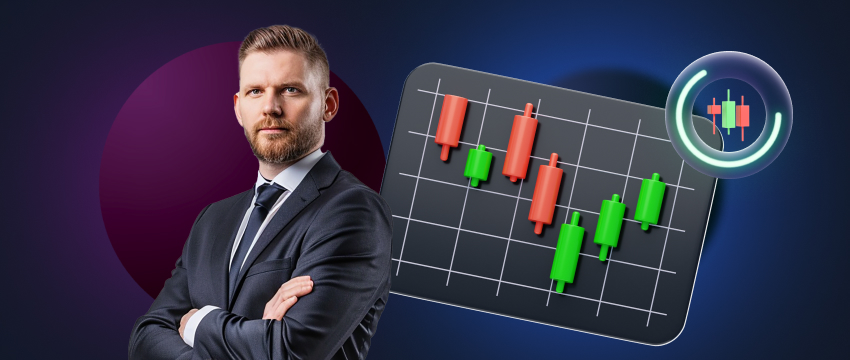Forex traders use technical analysis to forecast future price movements of financial assets based on historical market data. It involves analysing trends, patterns, and other statistical indicators to make predictions about an asset’s future direction to be able to make trading decisions. Technical analysis is a popular trading tool among global traders, regardless of expertise.
The role of a technical analyst
Technical analysts usually consult charts to speculate how financial instruments will perform in the future. They also seek to gain a better understanding of market sentiment on price movements. Traders will typically use technical analysis to evaluate charts over small periods (minutes, weeks, days).

What type of trader uses technical analysis?
Traders de día
Traders de día are renowned for using technical analysis to execute a high volume of daily short-term trades. Day trading is however renowned for being volatile. It can lead to potentially large gains but the risk for losing a large sum of money is incredibly high. Traders usually exit open positions before the close of the trading day to mitigate the risk of loss that overnight trades may incur.
Traders de posición
A position trader seeks to identify trends and instruments that will make gains from that trend. They do this using technical analysis and fundamental. A position trader will usually hold onto trades for an extended timeframe. They also try to predict optimal entry and exit orders ahead of time.
Forex scalper
Forex scalpers (day-trading forex strategists) will usually use technical analysis to execute and profit off short-term or frequent trades. They attempt to capture small price movements by opening and closing positions rapidly, sometimes dozens or even hundreds within a single trading session. Popular technical analysis tools among forex scalpers include moving averages, support and resistance levels, and indicators like RSI (relative strength index) or Stochastic Oscillator to identify price patterns and entry/exit points.
Swing traders
A swing trader will try to profit from short-term price swings, holding positions for more than 24 hours or even weeks. Swing traders must however be mindful of the risk of potential overnight or weekend losses if price gaps occur. A swing trader uses technical analysis primarily to make trading decisions but will consider fundamental analysis when required.
Gestión del riesgo
For technical analysis to achieve successful trading outcomes, having a plan in place to manage risk is key. A plan of this sort defines the rules a trader will follow to open and close trades, taking into account their tolerance for risk, trading style, and trading objectives. A risk management plan will also seek to quantify possible losses and establishes the framework for how to respond or not respond in a way that reduces the risk for losing large sums of money. Analysis (technical or fundamental) are an essential component in building a risk management plan.

Technical analysis indicators
Technical analysts refer to several different indicators to boost trading outcomes. Some of the most popular include:
Medias móviles
Moving averages are used to analyse the market, to identify trends or indicate when one is moving in an opposite direction. Traders may use different timeframes (lengths) to measure moving averages. An uptrend is typically indicated by a rising moving average whereas a downtrend is usually demonstrated by a moving average that is dropping.
Momentum indicators
Traders make use of momentum indicators to establish how strong or weak stock prices are. The do this by assessing the rate of change of prices instead of the actual price changes themselves. Price differences are analysed over a specific period, with a current price compared to what it was at a particular point in the past. A momentum indicator is said to be negative if the recent price is lower than what it was in the past. In contrast, the momentum indicator is considered positive when the current price of an instrument is higher than what it was in the past. A momentum value above zero indicates that prices will rise whereas a value below zero typically suggests that prices are moving down.
Oscillators
In technical analysis, oscillators are a type of technical indicator used to analyse and predict the short-term price movements of financial instruments. They are called oscillators because they typically fluctuate or oscillate within a specific range. This behaviour indicates overbought and oversold conditions in the market. Oscillators calculate the relationship between current prices and past prices and offer traders insights into the strength, momentum, and potential reversal points of a given asset.
Niveles de soporte y resistencia
Support and resistance levels are a technical analysis tool used to identify a surplus of sellers (resistance) or buyers (support) in the market. It is based on the concept that supply and demand drive price fluctuations, i.e., when supply is higher than demand, prices drop, whereas when demand is high and supply low, prices increase.
Volatility indicators
Volatility indicators measure the volatility of a currency pair (i.e., the degree of price fluctuations in a financial instrument over a specific timeframe). Popular volatility indicators include ATR (Average True Range), Bollinger Bands, Volatility Index, Standard Deviation, ADI (Average Directional Index), and RVI (Relative Volatility Index).
Conclusión
Technical analysis is used by traders and investors to make trading decisions, such as identifying entry and exit points, determining stop-loss levels, and managing risk. It is important to note that technical analysis is based on historical data and does not consider fundamental factors such as company earnings, news events, or economic indicators. Therefore, it is often used in conjunction with fundamental analysis to gain a comprehensive view of the market.

Using a demo trading account to learn more about technical analysis
A trader can use a demo trading account to study technical analysis and the impact it has on executing trades. A demo account offers a simulated trading environment in which traders can enter and exit trades without putting their own money at risk. With a demo trading account, traders can explore the different technical analysis tools available and practice how to use them to achieve positive trading outcomes. A demo account also offers forex traders access to a range of educational resources and tools to widen their scope of knowledge about forex trading, as well as current news and insights about the different markets.
Operar con T4Trade
T4Trade is a powerful forex broker, popular among traders worldwide. The broker offers traders access to extensive resources on forex trading, including the T4Trade Academy for a wide range of videos, podcasts, webinars and LiveTV. Open a demo trading account with T4Trade and get access to the leading Metatrader 4 trading platform, arguably the most popular platform across the globe.
AVISO DE RESPONSABILIDAD: Esta información no se considera asesoramiento ni recomendación para invertir, sino que es una comunicación de marketing




